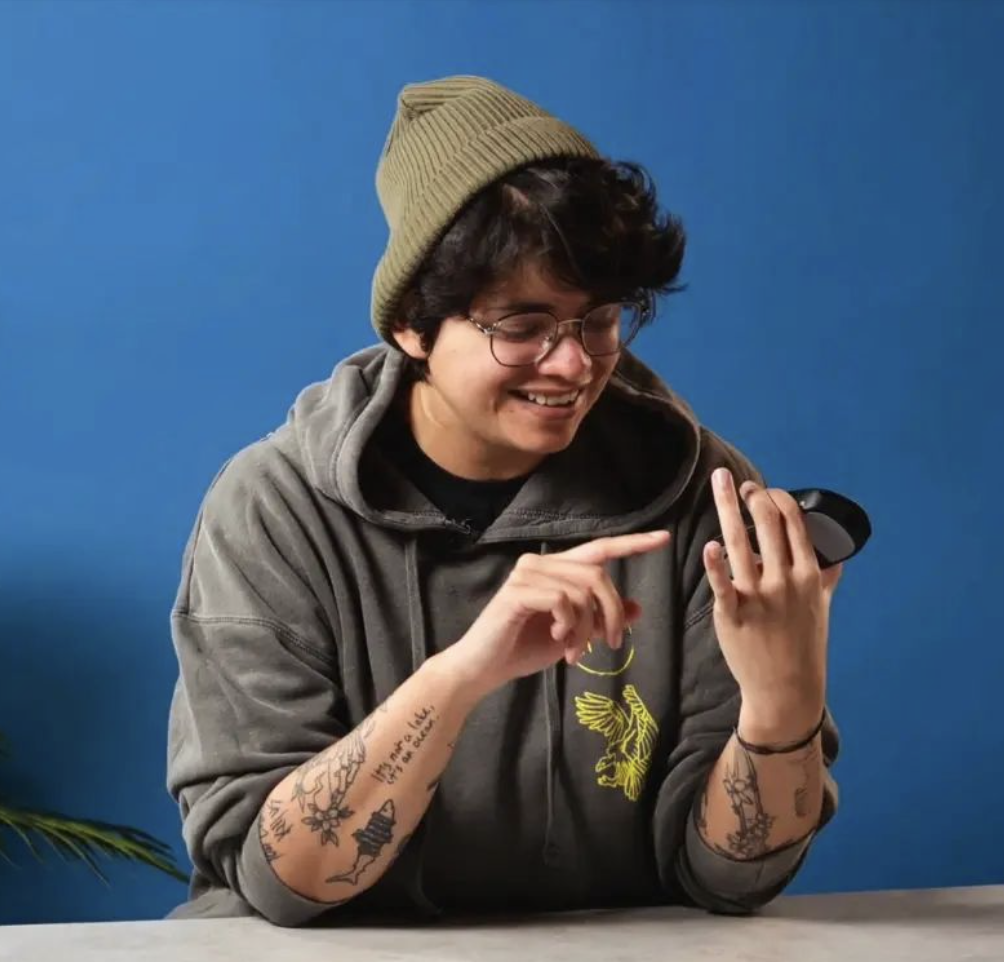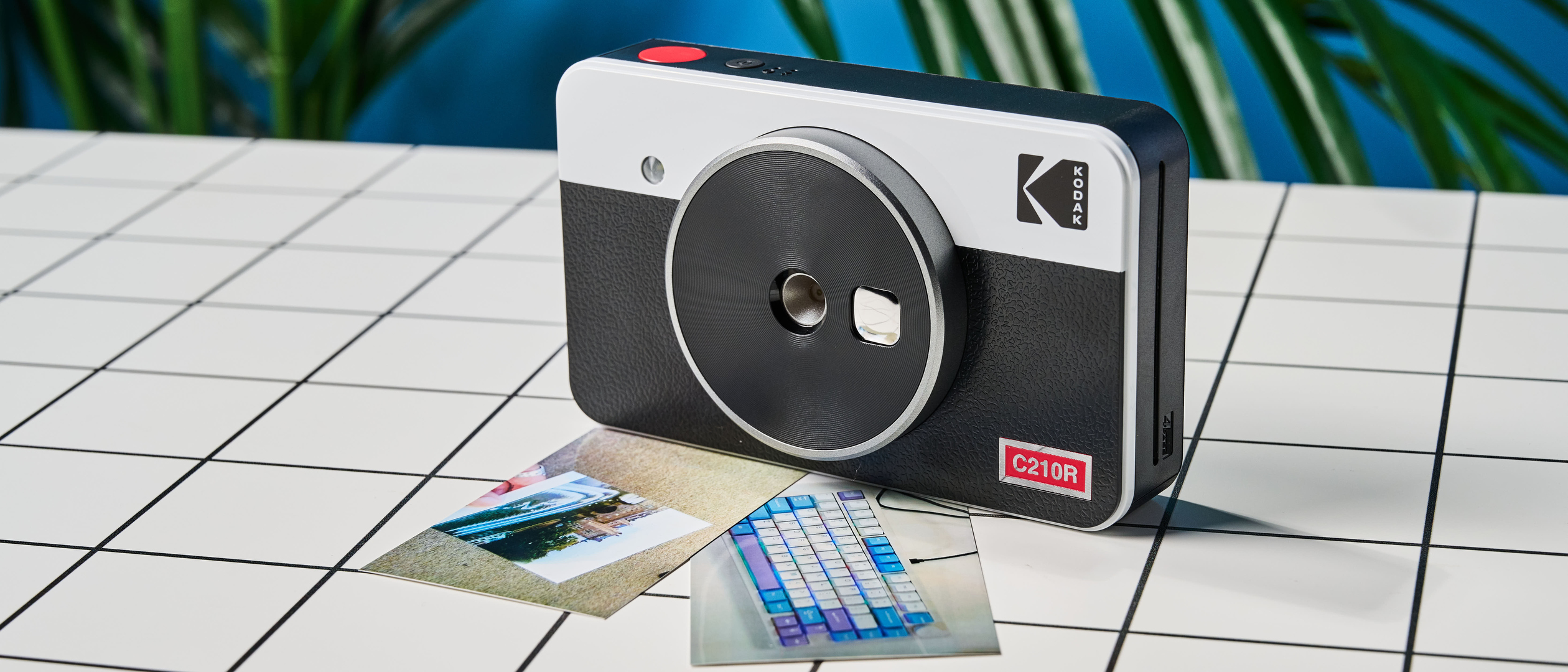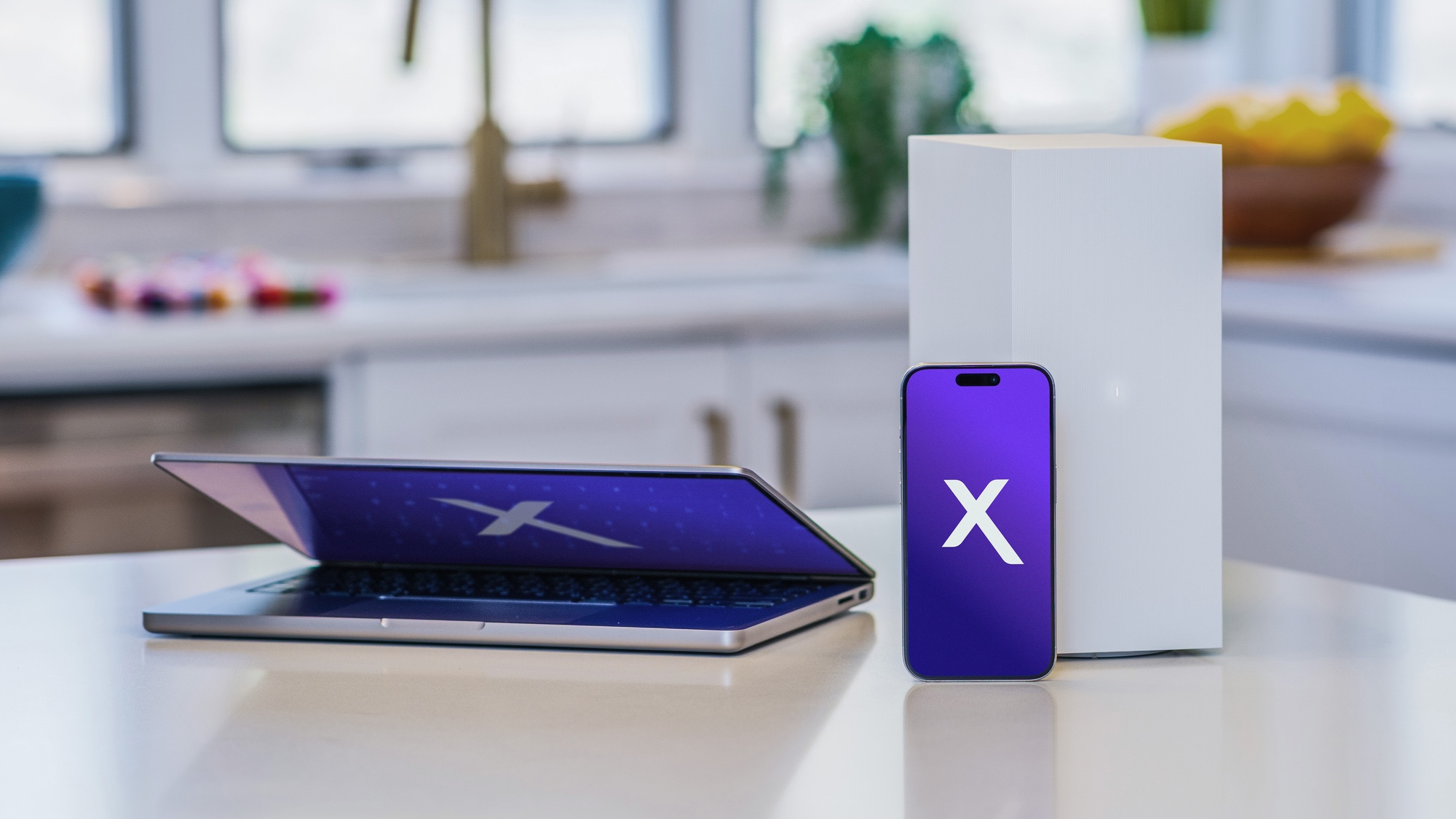Tom's Guide Verdict
The Kodak Mini Shot 2 Retro is a portable 2-in-1 instant camera and printer that produces retro shots, renders colors faithfully and boasts very good low-light performance. You can also print photos directly from your smartphone in just under a minute. However, battery life is subpar and there’s no indicator, plus it can’t shoot double exposures.
Pros
- +
Looks retro
- +
Faithful color reproduction
- +
Straightforward controls
- +
Good low-light performance
- +
Compact and portable
Cons
- -
No double exposures
- -
No battery indicator
- -
Subpar battery life
Why you can trust Tom's Guide
Smartphones have made photography very accessible, and you now get pro features available on most phones. While I love my Google Pixel 7 Pro’s camera, I hate the fact that most of the photos I click get lost in the shuffle. And this is why instant cameras, like the Kodak Mini Shot 2 Retro, are great. Physical prints, for me, are still unbeatable.
The Mini Shot 2 Retro is — you guessed it — a very retro-looking camera that’s super compact and portable, making it a great travel companion. Thanks to the straightforward control scheme, the camera can be used by anyone, and one print will cost you just 73¢. Kodak’s offering also features really good low-light performance and faithful color reproduction.
But with its shortcomings, is it one of the best instant cameras around? Read my full Kodak Mini Shot 2 Retro review to find out.
Kodak Mini Shot 2 Retro review: Specs
| Specs | Kodak Mini Shot 2 Retro |
|---|---|
| Price | Starts at $159 / £124 |
| Lens | Fixed-focus lens |
| Exposure control | Automatic, ISO not specified |
| Shutter | Not specified |
| Aperture | Not specified |
| Flash | Manual/Auto |
| Self-timer | Up to 10 seconds |
| Power | Rechargeable Lithium-ion battery |
| Dimensions | 5.23 x 3.11 x 1.02 inches |
| Weight | 8.99 ounces |
| Film used | Kodak 4PASS 2.1 x 3.4-inch |
| Print time | Up to 60 seconds |
| Cost per print | 73¢ |
| Colors | Black and yellow, black and gray |
Kodak Mini Shot 2 Retro review: Cheat sheet
- What is it? A retro-looking hybrid instant camera and printer
- Who is it for? For people who want a compact instant camera for traveling
- How much does it cost? The Kodak Mini Shot 2 Retro is available as a bundle only, starting at $159 / £124
- What do we like? The retro looks, faithful color reproduction and lovely prints, straightforward controls, good low-light performance, and its compact build
- What don’t we like? There are no double exposures, no battery indicator, and battery life is subpar
Kodak Mini Shot 2 Retro review: Price & availability

The Kodak Mini Shot 2 Retro is part of Kodak’s Retro lineup which consists of this camera and the larger Mini Shot 3 Retro. The Mini Shot 2 Retro is available as a bundle, and you can buy it either directly from Kodak or at Amazon. Available for $159 / £124, the bundle consists of the camera, 68 sheets and ink cartridges. You can also get it in one of two colorways: black and yellow, or black and gray.
The Mini Shot 2 Retro’s closest competition is the Fujifilm Instax mini EVO which, without film, costs $199 / £174, while the similarly-sized Instax mini LiPlay costs $169, also for the camera alone. The Mini Shot 2 Retro is therefore pretty good value for money.
Kodak Mini Shot 2 Retro review: Design & build quality

Sporting a compact design that fits in one hand, the Kodak Mini Shot 2 Retro measures only 5.23 x 3.11 x 1.02 inches. It’s the antithesis of the bulky Mini Shot 4 Era ($229). It weighs just 8.99oz, too, so it’s highly portable and can easily be carried in a pocket.
I tested the black and gray model which looks lovely and very retro, borrowing styling cues from the likes of the Kodak EKTAR H35 and the i60 film cameras.
All Kodak Retro and Era cameras use ink cartridges, unlike the Canon Ivy Cliq+ ($159), for instance, which uses heat to create an image. Zink tech eliminates the need for ink cartridges and is more eco friendly in comparison.
You don’t need to load paper separately in the Mini Shot 2 Retro as the cartridge and paper unit come combined. This eliminates the risk of putting paper in the wrong way and only realizing when a messed-up print emerges. The Mini Shto 4 Era requires paper and cartridge to be loaded separately.
Kodak Mini Shot 2 Retro review: Controls

Kodak likes to keep things simple, ensuring that anyone can use its instant cameras thanks to the straightforward control scheme. The power button and red shutter button sit on the top of the Mini Shot 2 Retro and the latter has a nice tactile feel to it. Thanks to the camera’s small size, it’s easy to reach for the shutter button with your index finger.

On the back is a small LCD screen which is easy to navigate with the buttons. You can turn the flash on, set the self-timer to 10 seconds, add filters and a border to your prints, and more. I wish the screen was bigger, though, because there’s a lot of empty space on the back of the camera.
Kodak Mini Shot 2 Retro review: Image & print quality

The Kodak Mini Shot 2 Retro is equipped with a fixed-focus lens and has a fixed aperture. There’s no viewfinder as the camera comes with a 1.77-inch LCD screen.
I’ve found the Mini Shot 2 Retro’s image and print quality better than that of the Mini Shot 3 Era’s ($209) and the Mini Shot 4 Era’s. This is a compact camera with no manual control over exposure and focus. If you want that, consider the Fujifilm Instax mini 99 ($199) instead.

So how does the camera perform indoors? My living room gets plenty of natural light, and this helped the Mini Shot 2 Retro highlight various colors. The first photo above, of a collection of postcards, put the camera through its paces as there are so many colors involved. And the Mini Shot 2 Retro passed with — ahem — flying colors. They appear true to life and vibrant. The camera even reproduced the colors accurately in the photo of my partner putting up a print on our wall.
Similarly, the photo of the Gamakay TK75 Pro keyboard clearly shows the RGB backlighting. While the pink and blue keycaps appear more contrasted than they are in real life, it’s still very close.

You can choose from an array of filters to apply to your images before you capture them. Monochrome is my favorite as it adds a vintage feel to the prints. Both photos above were shot using the monochrome filter. I love that in the first photo you can even see a pigeon in flight! For a camera that doesn’t boast any fancy settings, I’m impressed with the fact that it caught the pigeon — and when I looked at the print closely, the pigeon appeared quite sharp despite being in motion.

In bright conditions outdoors, the camera truly comes into its own. In the first photo in the gallery above, I love the sunrays the Mini Shot 2 Retro captured, as well as the ripples in the water. The swans’ and ducks’ colors have been faithfully reproduced too. The second photo is one of my favorites I’ve ever shot, capturing a lot of the scene: from the blue sky to sunlight falling on the building, and of course, the seagull standing on the wooden stump.

The front of the camera features a small selfie mirror. Unlike the cameras from the Era lineup, the Mini Shot 2 Retro doesn’t feature face detection which can prove to be frustrating when photographing another person or taking a selfie. As you can see above, my selfie has turned out with a blurred aesthetic, and although I personally like this style, not everyone will be pleased with it.


When it comes to low-light performance, the Mini Shot 2 Retro performs decently — it’s the best I’ve seen from all the instant cameras I’ve tested. It has a good flash range, as you can see above. The first photo was taken with the flash off and the second with the flash on. The greens in the second photo look lush, albeit out of focus, and I was really satisfied with how the shots turned out.
Kodak Mini Shot 2 Retro review: App

One of the biggest selling points of the Kodak Mini Shot 2 Retro is that you can print photos directly from your smartphone by using the Kodak Photo Printer app, available on iOS and Android. Simply pair the camera with your phone, select any image, edit it, add a border (or don’t), and wait 60 seconds for the print to emerge.
Kodak Mini Shot 2 Retro review: Film cost & yield

The Kodak Mini Shot 2 Retro uses Kodak 2.1 x 3.4-inch paper and 4PASS cartridge. One cartridge can print eight photos. A pack of 30 sheets and three cartridges will cost you $22 / £18 — that’s 73¢ per print. The print size is similar to that of Fujifilm Instax mini film used by the Instax mini EVO and the Instax mini LiPlay — 20 pieces of Instax mini film generally cost $14 / £14.
Kodak Mini Shot 2 Retro review: Battery life

Equipped with a rechargeable Lithium-ion battery, the Kodak Mini Shot 2 Retro goes from zero to 100% in about 70 minutes when charged with a 30W USB-A to micro USB charger.
Kodak claims a single charge is capable of producing 20 prints — depending on usage conditions — but my testing proved otherwise. The camera died twice: once after printing 10 photos, and the second time after printing eight photos. The Instax mini LiPlay is capable of printing 100 shots on a single charge, and even the cheaper Polaroid Go Gen 2 ($79) lasts for 18 shots.

I also wish the Mini Shot 2 Retro had a battery indicator on its screen. Twice in my testing, I tried to print a photo only to be told I needed to charge the camera. This could have been negated by a battery indicator. There’s a lot of free space on the back of the camera, so a battery indicator somewhere, or a larger display to accommodate one on screen, would’ve been nice.
Kodak Mini Shot 2 Retro review: Verdict

The Kodak Mini Shot 2 Retro has a lot to offer. Its compact size means the camera is highly portable, making it a great travel buddy. The ability to print directly from your smartphone is a valuable feature, and prints take just under a minute to emerge. Print quality is excellent too, as colors are reproduced faithfully, and the camera’s low-light performance is satisfactory as well.
There’s not a lot wrong with the Mini Shot 2 Retro, but I really wish the LCD screen was bigger to accommodate a battery indicator. Speaking of which, its battery life is underwhelming compared to its competitors, and the Mini Shot 2 Retro doesn’t feature any double exposures either. Regardless, the Mini Shot 2 Retro is a loveable camera that strikes the perfect balance between vintage aesthetics and modern convenience.

Nikita is a Staff Writer on the Reviews team at Tom's Guide. She's a lifelong gaming and photography enthusiast, always on the lookout for the latest tech. Having worked as a Sub Editor and Writer for Canon EMEA, she has interviewed photographers from all over the world and working in different genres. When she’s not working, Nikita can usually be found sinking hours into RPGs on her PS5, flying a drone (she's a licensed drone pilot), at a concert, or watching F1. Her work has appeared in several publications including Motor Sport Magazine, NME, Marriott Bonvoy, The Independent, and Metro.

